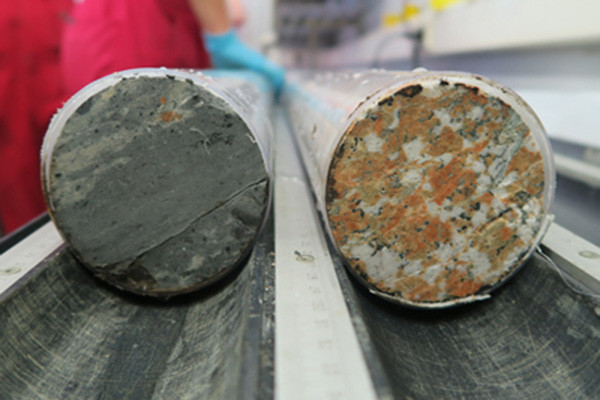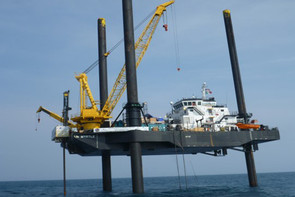Cores from Chicxulub crater reveal details about first days after asteroid strike that doomed the dinosaurs
October 7, 2020

New research supported by UT’s Center for Planetary Systems Habitability adds a new layer to the story of the end of the dinosaurs. The paper was recently published in the Proceedings of the National Academy of Sciences and is the latest co-authored by CPSH members to hit the news.
Penn State issued a press release, excerpted here, which summarizes the impact of the paper’s findings.
Scientists have long believed that a large asteroid hit Earth approximately 66 million years ago, triggering a mass extinction that wiped out three-quarters of all species on the planet, including non-avian dinosaurs. Researchers have found new evidence that supports the theory and paints the clearest picture yet of the Cretaceous-Paleogene extinction event.
Core samples taken from ground zero, the Chicxulub crater in the modern-day Gulf of Mexico, reveal what happened in the days after the massive asteroid impact. The core samples were gathered during a Scientific Ocean Drilling expedition in 2016 co-led by the Jackson School’s Research Professor Sean Gulick, who is also co-author on the study.
“The core samples show how fast changes took place in the crater — from this massive collision to the uplifting of a mountain chain in 90 seconds to the deposition of tens of meters of rock on top of that within a matter of months,” said Timothy Bralower, professor of geosciences at Penn State and a co-author on the study. “These are remarkable findings.”
The impact liquefied rock and lifted up earth, forming a new underwater mountain chain called a peak ring within seconds. Vaporized rock spewed into the atmosphere and rained back down on the planet. A massive tsunami traveled hundreds of miles from the crater, reaching to modern day Florida, Texas and central México. When the waters rushed back into the crater, they carried charred evidence of the destruction. Bits of burned vegetation sunk to the bottom of the sea, becoming trapped in sediment layers.
Later, studying pieces of the core, Bralower made an unexpected discovery — pieces of charcoal.
“Imagine this rock hitting the Earth at a velocity that would have created a massive amount of thermal radiation,” he said. “A fire ball traveled from the center of the crater to the edges of the Gulf of Mexico, frying all the vegetation or animals it encountered.”
Water from the tsunami swept up the charcoal and washed it back toward the crater, where it floated down to the sea floor and became buried along with other sediments, Bralower said.
“I never expected it,” he said. “To actually find [charcoal] in the crater was a big surprise.”
In addition to charcoal, chemical markers of burned carbon were found within these same sediments. Shelby Lyons, a graduate student at Penn State, and her adviser, Katherine Freeman, and Evan Pugh University Professor of Geosciences, analyzed these so-called burn markers in this latest study. These burn markers are observed in the vicinity of these charcoal fragments as well as within other Gulf of Mexico cores that that sampled the impact layer outside the crater. Material from these cores can help scientists piece together the regional destruction caused by the impact, but what was missing from the samples tells another important story about the global consequences.
For instance, rocks in the Yucatán are rich in sulfur, but earlier studies showed the chemical was absent in the cores from the crater. Those findings indicate that the impact vaporized rocks containing the sulfur, allowing the chemical to enter the atmosphere, where it reflected sunlight away from Earth and led to global cooling. This new study of burn markers further suggests that soot from the fossil carbon in the target further added to this global cooling.
“The real killer has got to be atmospheric,” said Sean Gulick, who is also the Co-Director of the Center for Planetary Systems Habitability, a new research unit at the University of Texas at Austin, “The only way you get a global mass extinction like this is an atmospheric effect.”
The National Science Foundation partly funded this research.
A copy of the paper is available on the CPSH website under CPSH Contribution #0015.

Image: Provided by Timothy Bralower
